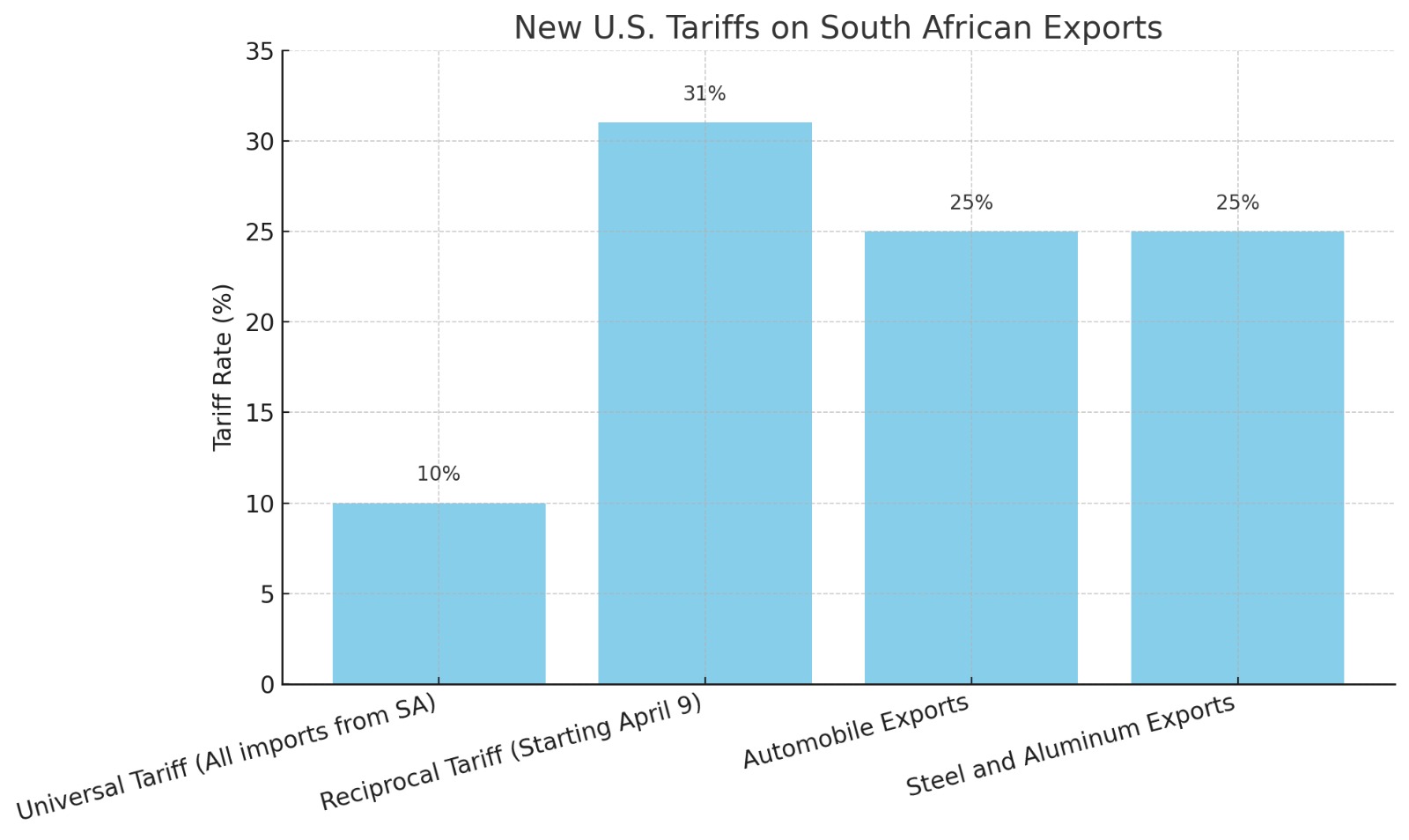Trump slaps tariffs on South Africa, leaving room for opportunity
Based on the New York Times and official White House updates, South Africa was not exempted from the new tariff hikes announced by U.S. President Donald Trump. In fact, South Africa now faces one of the most significant increases, with Trump citing “unfair trade practices” and the need to “protect American jobs” as justification.
Starting April 5, a universal 10% tariff will apply to imports from all countries, including South Africa. Just days later, from April 9, South African goods will face a staggering 31% tariff - a punitive rate under Trump’s new “reciprocal tariff” strategy. In addition, specific tariffs on automobiles, steel, and aluminum have already taken effect.

This aggressive shift in U.S. trade policy poses real threats to South Africa’s export-driven sectors, but may also be a catalyst for long-overdue regional diversification.
1. Automotive industry takes a direct hit
South Africa’s automotive sector, which exports more than $2 billion worth of vehicles and components to the U.S. annually, is squarely in the crosshairs. A 25% tariff on all foreign-made vehicles and key auto parts came into force on April 3, affecting all South African exports in this category. This will sharply reduce competitiveness in the U.S. market, and auto manufacturers in South Africa are already warning of possible job losses and contract disruptions. The Department of Trade and Industry has said it will seek immediate engagement with U.S. trade representatives.
2. Steel and aluminum face direct consequences
South Africa's steel and aluminum exports are already subject to a 25% tariff since March 12. Although South Africa’s volumes to the U.S. are modest, the knock-on effect of redirected Chinese and global oversupply could drive down prices in South Africa’s key markets, making local producers more vulnerable. The increased global competition may require a fast response in terms of pricing strategies, export routes, and even government-backed industry support.
3. Rand weakens as markets react
The U.S. tariff hike triggered market unease, with the South African rand slipping to 19.01 per U.S. dollar, its weakest level in nearly three months. This volatility creates inflationary pressure on imports and complicates budgeting for South African businesses reliant on foreign inputs or capital. While a weaker rand may support exports in the short term, rising input costs could strain domestic producers and squeeze consumers.
4. Trade diversification now a necessity
The tariff spike intensifies the need for South Africa to fast-track trade diversification. The African Continental Free Trade Area (AfCFTA) is an obvious lifeline, offering expanded market access within the continent. Increasing exports to China, particularly in beef, citrus, and minerals, remains another key strategy. There is also rising pressure to establish a new bilateral trade agreement with the U.S. before AGOA (African Growth and Opportunity Act) expires in September this year. According to the South African presidency, formal talks are being prioritized to avoid a prolonged period of trade instability.
Is there a silver lining?
Despite the tariff pain, there may be long-term gains if South Africa responds decisively:
- New market openings could emerge as other countries retreat from U.S. trade, creating opportunities elsewhere.
- Foreign investment prospects may improve if global manufacturers see South Africa as a strategic base for exports into Africa, Europe, or the Middle East.
- Stronger intra-African ties through AfCFTA can reduce external dependence and build long-term economic resilience.




